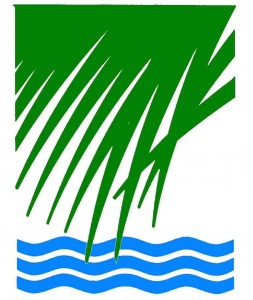News: Ahupua‘a stewardship makes progress
Posted on Aug 19, 2024 in MainColumn: Ahupua‘a stewardship makes progress
By Iokepa Miner, Kawika Winter and ‘Alohi Nakachi
June 4, 2024
Based on intrinsic connections to their lands and waters, Native Hawaiians developed highly advanced ahupuaa stewardship practices around the flow of freshwater that maintained healthy habitats from mauka to makai. But in the last 150 years, large-scale land conversion significantly altered landscapes across the islands. Development and commercial agriculture were particularly disruptive, resulting in fragmented habitats, the spread of invasive species, degraded coral reefs, and widespread stream diversion that deprived people, habitats and native wildlife of much-needed water.
To repair the extensive damage inflicted on our natural world and on us, we are working to restore mauka- makai connections and the streams that support them.
Our efforts support a sustainable state of abundance referred to as aina momona, build resilience to climate impacts, and provide essential habitat for Hawaii’s vulnerable native species.
Not coincidentally, our efforts reflect and perpetuate the Native Hawaiian stewardship systems and practices that simultaneously sustain people, habitats and wildlife.
Though restoring mauka-makai connections is a formidable task, we know that aohe hana nui ke alu ia — no task is too big when done together by all, and that is exactly what we are demonstrating at He‘eia ahupuaa on Oahu.
Once abundant with clean water, this landscape provided for the community for centuries. Here, auwai, or canals, carried stream water to loi wai for farming wetland crops and to a vast fishpond situated within a productive estuary and surrounded by a healthy reef. Today, we’re restoring these systems.
Inspired by the Ko‘olaupoko Hawaiian Civic Club and Ko‘olau Foundation, a new generation of Native Hawaiian leaders launched Papahana Kuaola, Kako‘o ‘Oiwi, Paepae o He‘eia, and the He‘eia National Estuarine Research Reserve to restore Hawaiian practices and traditions; the area’s upland forest, wetlands and fishpond; and the stream that connects and nourishes them. The federal government, state agencies and many private groups support these efforts through funding, integrated management of bordering lands, and research and monitoring to assess the impacts of restoration across the ahupuaa.
And together, we’ve made much progress. Some are easy to see. For example, invasive mangroves that once towered over and clogged wetlands and streams have been removed and native plants now carpet stream banks. Auwai have been opened and rebuilt, loko ia (fishpond) restored, and loi kalo replanted. A newly constructed poi mill and hale serve as gathering places for community. And after a decades-long absence, native water birds once again nest and breed in the area.
While other changes may not be as easy to see, they reaffirm the important progress we are making. Surveys confirmed that native fish, including oopu, amaama (native striped mullet) and aholehole (Hawaiian flagtail) — also not seen for decades — are once again making their way into He‘eia’s estuaries, wetlands and streams. Even the elusive oopu naniha — one of five gobies native to Hawaii and an important cultural species for Native Hawaiians — was recently seen in the estuary.
This progress is made possible from the cohesion of the different partners within He‘eia building a system together and being part of that system together. These involve people on the ground and with the water touching and knowing every resource. Employing and building these knowledge holders support the social and ecological structures and systems where people provide the bones to listen and learn to support aina needs and practices, such as moving and restoring water flows that are the source of all life within the ahupuaa. Indigenous stewardship and perpetuation is made possible by allowing knowledge holders to be in place, educating learning knowledge holders, and supporting place-based aina practices.
As we celebrate the recent World Fish Migration Day, we celebrate the many partners, supporters and volunteers who’ve helped reconnect habitats at He‘eia, especially those that oopu need as they migrate between freshwater and the ocean to feed and breed. We also celebrate Native Hawaiians whose legacy guides us. When we work together to perpetuate the Hawaiian culture and knowledge bestowed upon us, we perpetuate Hawaiian ecosystems and wildlife!
Visit PapahanaKuaola.org Opens in a new tab, KakooOiwi.org Opens in a new tab, PaepaeoHeeia.org Opens in a new tab and HeeiaNERR.org Opens in a new tab to learn more about this work. We also encourage participation in the volunteer and educational opportunities at He‘eia to gain an appreciation for Native Hawaiian cultural practices and to help build aina momona.
———
This Island Voices also reflects views submitted on behalf of Papahana Kuaola, Paepae o He‘eia and the Department Land and Natural Resources’ Division of Aquatic Resources.
Iokepa Miner is a conservation specialist at Kakoʻo ʻOiwi; Kawika Winter is reserve director at Heʻeia NERR; and ‘Alohi Nakachi is Oahu marine program manager at The Nature Conservancy Hawai‘i and Palmyra.
